Oradour-sur-Glane, an unassuming name on France’s map that looks like any other of its neighbours. Yet this innocuous village bears deep scars that speak a thousand words of horror. It is a story that needs to continually be told so that memories of Oradour’s families can be kept alive and honoured.
On our pilgrimage to connect with Europe’s World War history, we have travelled east to Treblinka in Poland, south to Bovec in Slovenia and Kalavrita in Greece and west to the harrowing region of Ypres, Verdun and the cemeteries of northern France. So when Myles said he wanted to visit Oradour-sur-Glane, it made perfect sense. I have heard others talk about their visits to this village, ravaged by war, although had no idea about its history or what we could expect there. One thing was for sure, our experience would undoubtedly be moving if our other commemorative visitations were anything to go by.
From memorial stones and razed killing fields to the profound and stark images created by the Birkenau railway just west of Krakow. What would our souls be called to learn at this little-known village in central France? Check out our memorial visits on this interactive map.
It seemed fitting that our visit to Oradour coincided with All Saint’s Day – 1 November. An important day on the Religious calendar when the dead are remembered and celebrated. What a symbolic day to be visiting a memorial site where a village fell to its knees, at the mercy of an army set on retribution and annihilation.
As we drove into the village of Oradour-sur-Glane just north west of Limoges, it was clear from the map that there were a large number of cemeteries around the outskirts. Nothing necessarily unusual about that per se. They were sheltered from the road by trees to create some privacy for those buried there. Yet the grim reality soon stood out, as this village turned from a name on Google Maps to a village martyr. Separated from the new village by a road and underground walkway, the ruins of an entire community lay bare as we drove past in mesmerised silence. Only one expletive uttered from our mouths, which was one of incredulity. Oh my god!
Parked up opposite the ghost village, images went through my mind about what unfolded here and, more importantly why. A story that would not really become any clearer as we entered the commemorative arena, built by its modern day citizens.
The first thing that struck us as we walked to the entrance was a 100ft statue. A monument of a woman being engulfed by flames. Engraved words triggered the beginning of a story that we knew would not have a happy ending. The events that unfolded on 10th June 1944, told simply by this statue, began our Oradour journey.
‘Ici des hommes firent a leurs meres et a toutes les femmes, les plus grave injure.
Ils n’epargnerent pas les enfants.’
‘Here men made to their mothers and all women the most serious insult – they did not spare the children.’
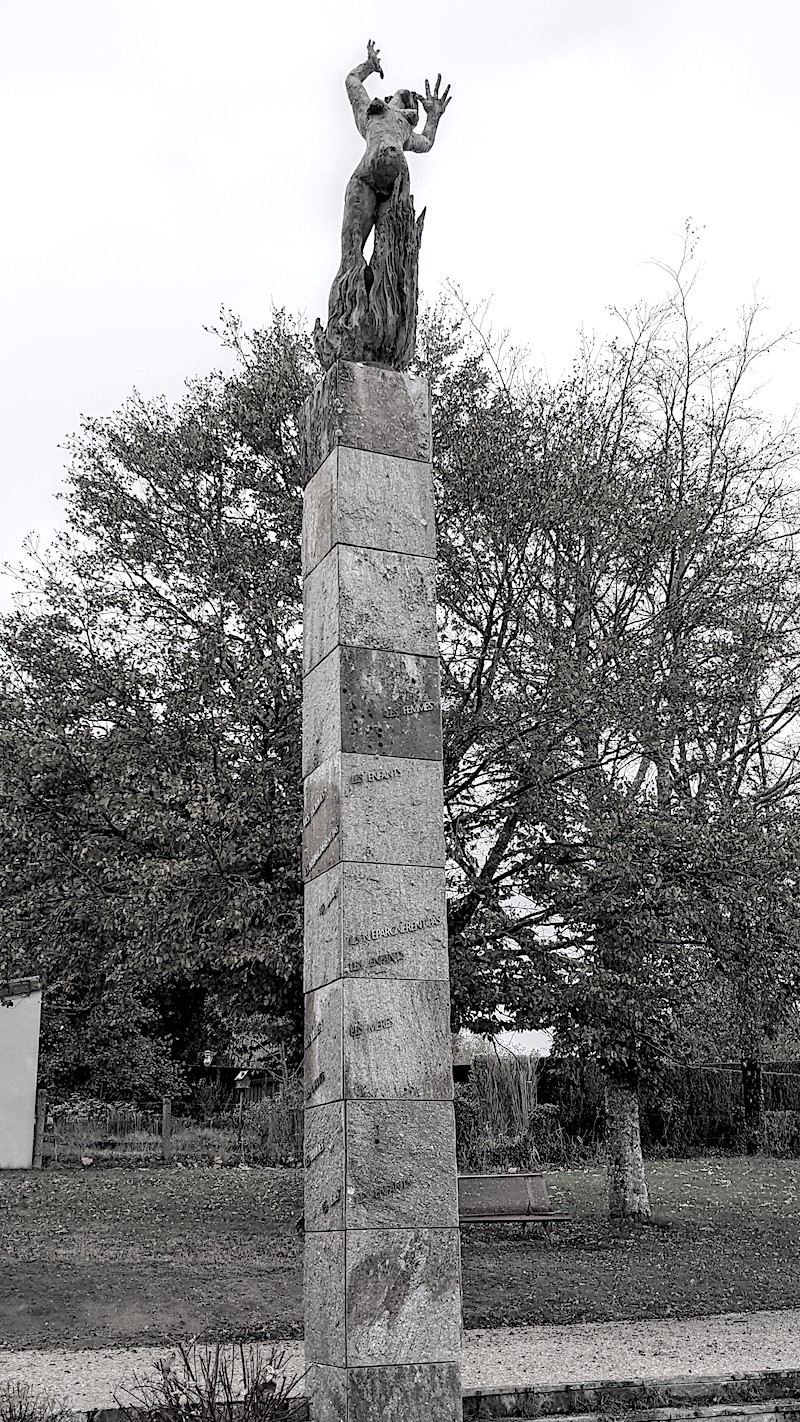
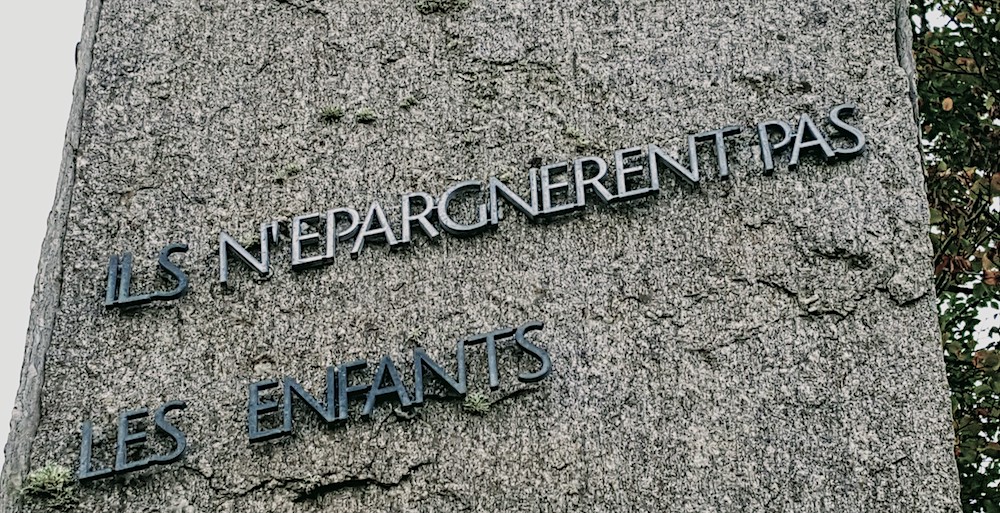
As we walked across a flat tarmac pavement towards the Oradour village plaque, we were taken down some steps generating a surreal feeling of going into another world. Underneath the ground a shop, a ticket desk and a museum greet you giving you options. Turn right into the museum where upon you pay 2€. Or go straight on towards the ruined village, which is free to enter. As we had been travelling all day we only had time to do one or another, so we chose to visit the village, where we knew we would feel the soul of the place.
Through a dark tunnel, adding to the atmosphere of Oradour’s tale, we were presented with a photographic project that the community is still working on. Their aim is to collect pictures of every single inhabitant of this tortured village and honour them on this Remembrance Wall. And so like our experiences at Auschwitz, seeing the faces of young and old made the whole experience more real and poignant. This was no longer a story, or movie to immerse ourselves in – this was real life. This was a moment in time of people’s lives, captured by these images.
I felt my heart skip a beat as I saw families; generations of mothers, brothers, fathers, aunts and grandparents, dads and sons all lined up on both sides of the tunnel. The eldest I saw was 81 and the youngest just 2 months old. This truly set the scene for what were about to witness.
Returning to the surface, the cleverly created tunnel that protects the village, really transports you from the new to the old. Streets in tact with pavements and electric cables for the tram that travelled through the beating heart of this place. Yet then the stark reality dawned on us as we saw the fire torn buildings, with chard rubble strewn where the rugs would have lain. Rusted shutters at the windows that now just let the wind course its way through. Signs for the garage, the café, the boulangerie, the sabot maker and the coiffure. And the faint yet distinct smell of smoke still hung in the air making the massacre all the more real. The walls vibrating with the sobs of scared children looking to their mothers for answers. Fear trodden into the dust that has settled between the buildings holding secrets of their death.
So what events unfolded here to create such a travesty?
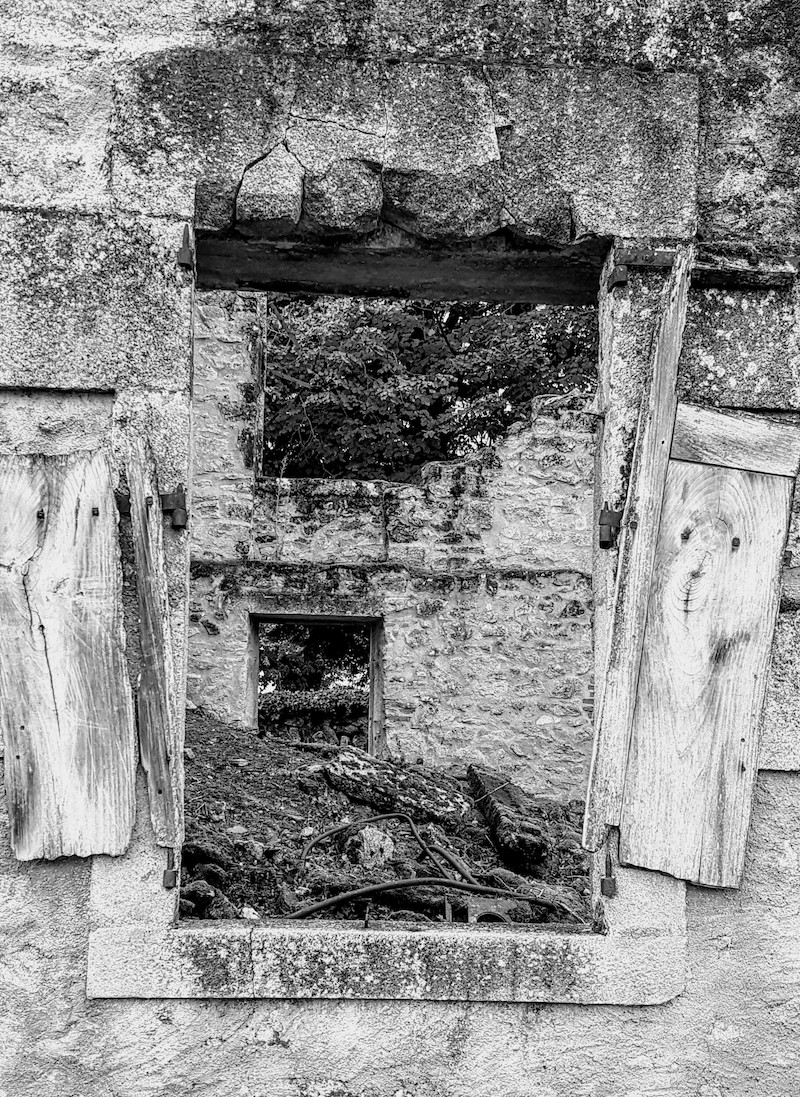
Oradour’s Massacre – the why’s
There is some ambiguity about the reason for this insane massacre on a peaceful village where children played on their bicycles and cafés bustled with war-time stories. Because only 6 people survived and the commander who order the attack died days after, the real justification for this attack has many shades of truth. The definitive reason may remain buried beneath the rubble with the muffled screams of those who perished.
One of the suggestions was that it was retribution for the capture of a German officer. Another that it was because of Resistance activity centred at the village. Or that it was simply German frustration over the D-Day landings that occurred just four days earlier.
The why’s are tough for us as we try to get our heads around such atrocities. Yet however you look at it, the reason for this act of terror can never be settled in any sane mind. What seems more poignant is the unfolding of events on that day in June 1944. A mere 74 years ago, where 24 hours saw terror run through this community leaving only the echo of the victims’ screams for mercy.
200 Nazis stormed the village on 10th June where upon they rounded up the community. Women and children were taken to the church and men and boys over 15 were gathered, ostensibly for the purpose of an identity check and a search for explosives and weapons. Those held captive in the church, after a failed attempt to gas them, were shot and then set alight. The men were separated into 6 groups and taken to different barns, where upon they were shot from the knees down. Only intending to wound and prevent escape, the Nazis then covered them in straw and wood and set them on fire, left to die the most horrific death.
Then they burnt the whole village, looted homes and businesses and left without any explanation. The Nazi troops headed up to Normandy to join the fight against Allied troops from the D-Day landings. In Devine retribution, many of those soldiers and the Nazi commander Diekmann, who ordered the massacre were killed and in a cruel twist of fate never brought to justice.

Oradour’s memory
Some time after the massacre and whilst the smoke still rose to the sky, French President, Charles de Gaulle ordered the village remains to be left as a memorial. To honour one of the biggest massacres on French soil, Oradour would serve as a reminder of the atrocities, the victims and the horror. Only 6 people survived; 642 were brutally murdered, including 205 children and each and every one will be remembered by generations to come. To walk in the footsteps of their terrified souls as they were led to their deaths is a surreal and sobering act. And if you are in the area, a visit to this village martyr to pay your respects is a must.
Whilst it seems the world has not learned its lesson, we can only hope that memorial sites like Oradour serve to remind us of the importance of kindness, love and respect.
Check out our Gallery of photos from our current World War visit by clicking the image below.

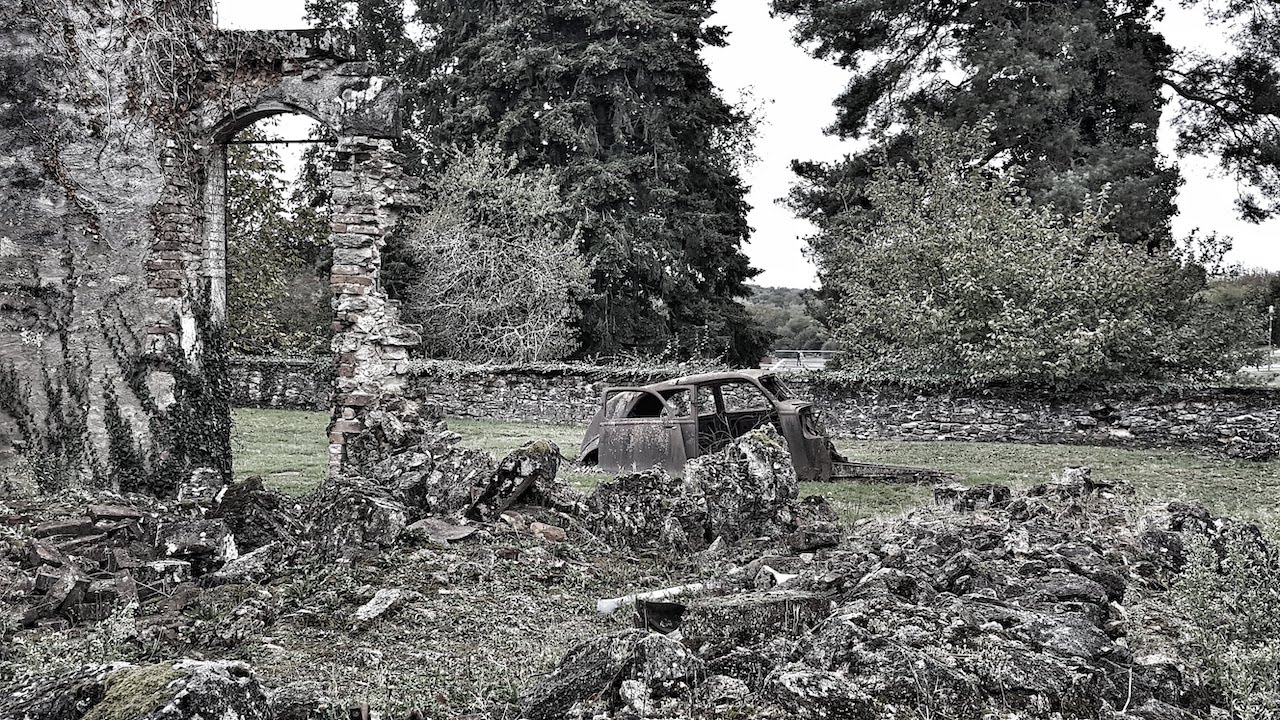

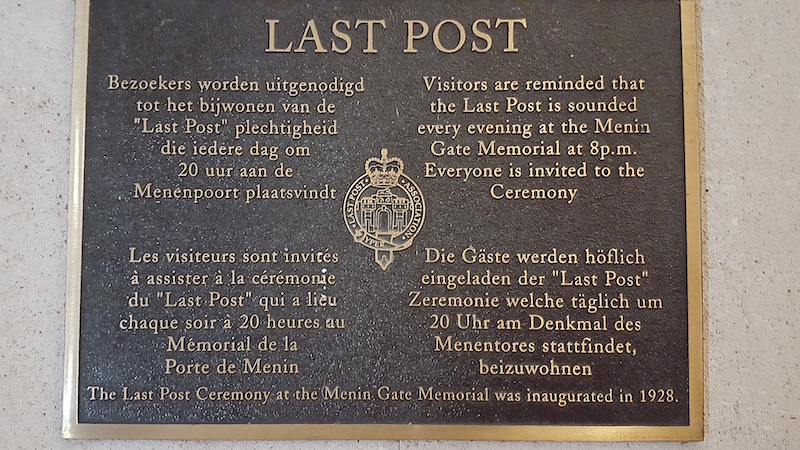
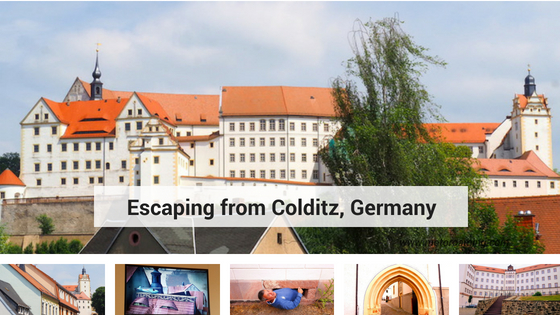
How devastating! Thank you for sharing this sober piece of history. Your photos are beautiful.
Thank you Sierra. Kx
Thank you for sharing this location. I have never heard of it and it feels like a story that really needs to be told. I have added it to my plan for a similar trip.
I feel the same – needs sharing far and wide. Kx
What a horrific story, it’s so sad. Your photos complement the story beautifully.
Thank you Alison. So incredibly sad and traumatic. Kx
Wow! What a sad story – I can’t imagine how horrible this part of history was.
Yes such a travesty. Kx
Oradour is such an awful story, lovely post
Thank you Catherine. It was a heart-breaking place to visit although necessary. Kx
I have never heard of this massacre before, and it’s just devastating still today. Thanks for visiting and putting it together, and sharing their story that still needs to be told.
We have also visited Oradour -sur-Glane and it had such a lasting effect on us! Heartbreaking reminder that war is wrong and so pointless.
Hi Joy, yes it is one of those places that just stays with you and reminds us to be kind and compassionate. Shame that the powers that be can’t share that enlightened moment. The world would be a far more peace place. Kx